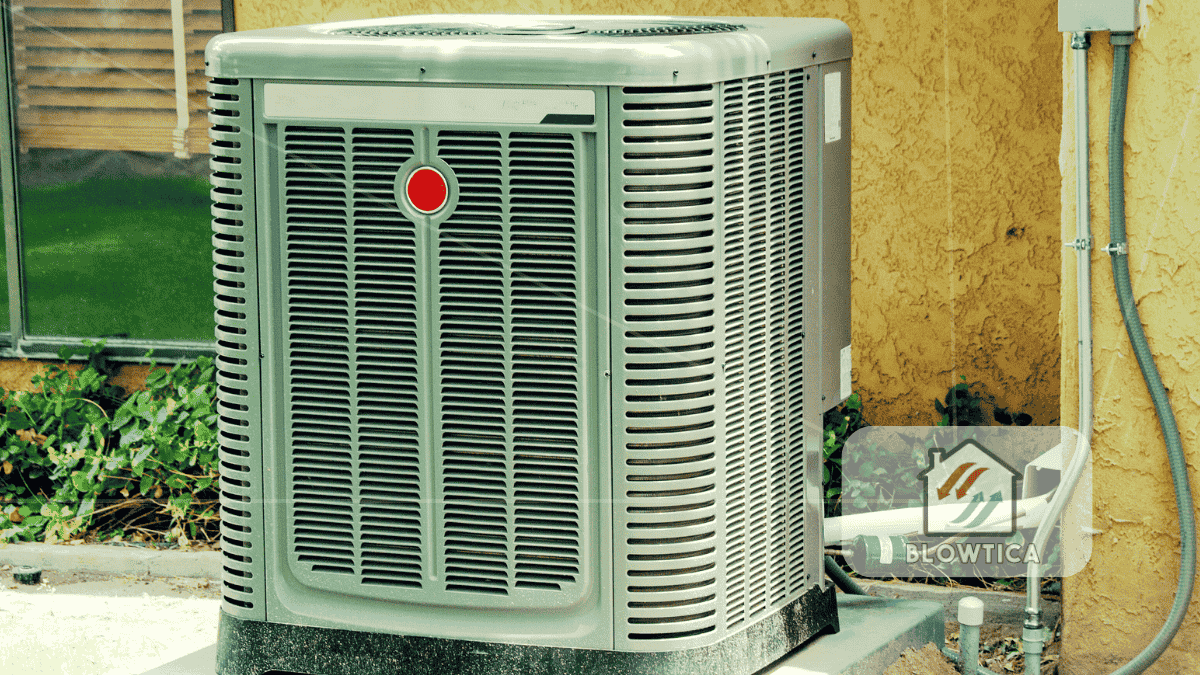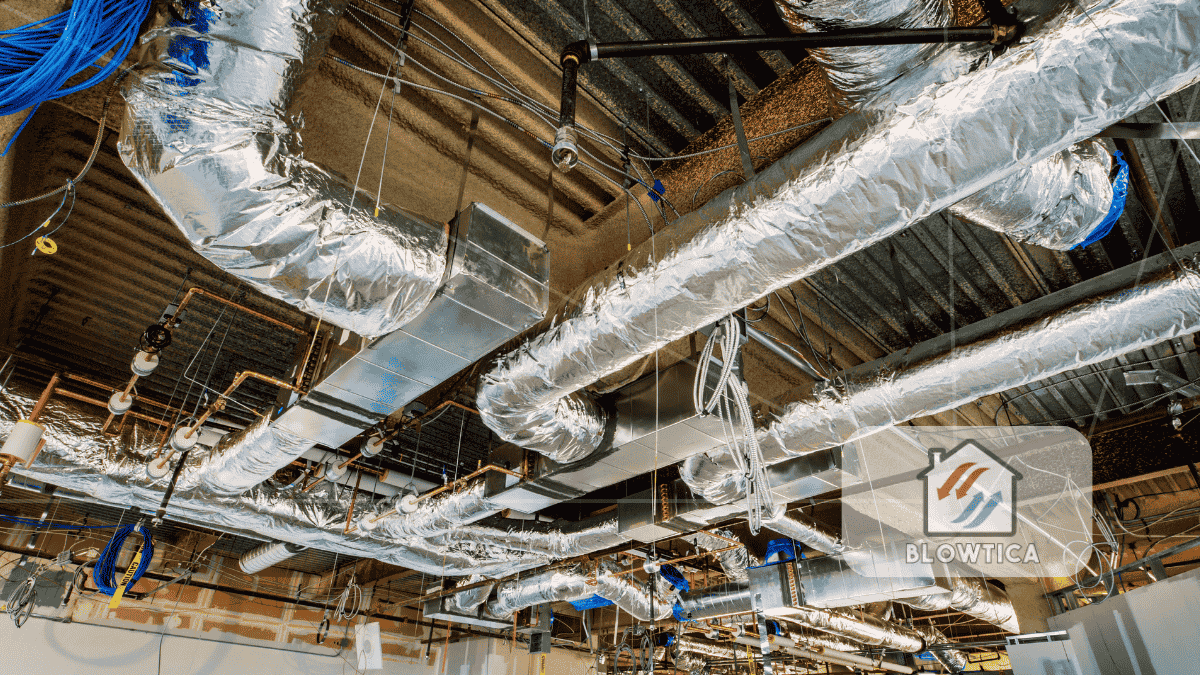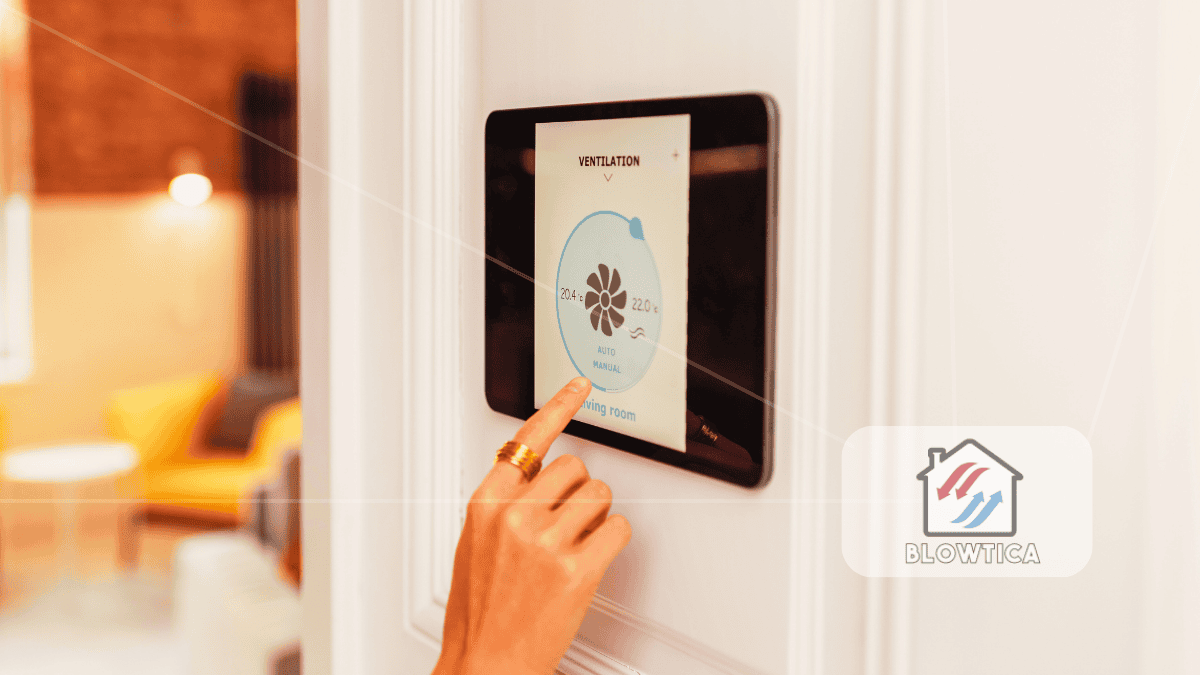
Heating and cooling buildings is expensive—and often wasteful. For decades, HVAC systems have chugged along with limited intelligence, overcooling empty offices or heating homes even when no one’s around. But AI-powered HVAC systems—a new class of smart technology—are changing that fast.
AI-powered HVAC systems are shaking up the energy landscape, delivering average energy savings of up to 45%. This isn’t a gimmick or hypothetical trend. It’s happening right now—in office buildings, retail stores, data centers, and homes. With utility bills soaring and sustainability targets tightening, businesses and homeowners alike are making the switch.
Let’s unpack how AI is reshaping HVAC, what kind of results users are seeing, and why this might be the most cost-effective energy upgrade available today.
The Legacy Problem: Outdated HVAC, Costly Habits
Traditional HVAC systems are reactive. They run based on fixed schedules or temperature setpoints without any real understanding of occupancy patterns, weather fluctuations, or energy pricing. That kind of one-size-fits-all logic leads to one thing: waste.
In most commercial buildings, HVAC accounts for 35% to 50% of total energy use. And much of that energy is lost heating or cooling unoccupied zones, battling outdoor temperature changes without foresight, or compensating for poorly maintained equipment.
This operational inefficiency translates into higher energy bills, increased maintenance, and unnecessary strain on the electrical grid.
Enter Smart Intelligence: What AI Actually Changes
AI doesn’t just automate—it optimizes. Unlike programmable thermostats or even basic smart systems, AI-powered HVAC systems analyze and adapt in real time using live data from multiple sources:
- Room occupancy and motion sensors
- Outdoor weather forecasts
- Historical usage trends
- Utility rate fluctuations
- Air quality and humidity levels
- Calendar integrations and building access logs
The AI processes all this data to make hyper-specific adjustments—turning airflow down in unused rooms, pre-heating before peak hours, or reducing cooling when solar heat gain drops.
This isn’t just efficiency. It’s precision control at a granular level, and the results speak volumes.
Real-World Proof: Case Studies That Show the Numbers
In 2024, a mid-sized hospital in Oregon upgraded to an AI-powered HVAC platform integrated with occupancy and environmental sensors. Within 11 months, it cut its HVAC-related energy consumption by 42%, saving over $250,000 in operational costs.
A commercial real estate firm in New York installed AI-driven systems across three office towers. Not only did it achieve 39% average energy savings, but tenant satisfaction scores improved due to more consistent comfort levels. That boost in occupant well-being helped the company retain two key corporate tenants.
Meanwhile, a 5-store supermarket chain in Arizona leveraged AI to coordinate its refrigeration and air conditioning units, saving over $1.1 million annually while reducing wear and tear on compressors by 30%.
The Financial Equation: Upfront Costs vs Long-Term ROI
So how much does it cost to implement AI in HVAC?
Installation costs vary depending on the scale of the system and whether it’s a retrofit or a new build. For residential homes, AI-integrated smart thermostats like Ecobee or Nest range from $150 to $300, with installation adding another $100 to $200.
For commercial properties, the cost is higher but scalable. A 50,000 sq ft office building might spend $20,000 to $50,000 on AI-enabled upgrades, depending on sensor needs and building complexity.
But here’s the key: most systems pay for themselves within 12 to 24 months through direct energy savings. After that, it’s all upside.
This rapid ROI makes AI-powered HVAC systems one of the fastest-paying investments in building infrastructure.
Core Capabilities: What Makes These Systems So Effective?
1. Predictive Maintenance
Instead of reacting to breakdowns, AI identifies component stress and flags maintenance needs early. This reduces surprise failures, lowers repair costs, and extends the life of HVAC hardware.
2. Adaptive Comfort Control
AI adjusts airflow, temperature, and humidity based on real-time occupancy and environmental inputs. No more cooling empty meeting rooms or overheating lobbies. Comfort is tailored to actual use.
3. Energy Load Shifting
With utility rates fluctuating throughout the day, AI can shift energy use to off-peak times. For example, it might cool a space early in the morning when rates are low, then maintain the temp later with minimal energy input.
4. Smart Zone Control
Larger buildings can have dozens of climate zones. AI manages them individually, rather than applying a blanket setting—allowing for more personalized comfort and sharper energy efficiency.
The Power of Sensors and Real-Time Data
Data is the lifeblood of AI. Without it, these systems are just software with potential. Smart sensors provide constant feedback on:
- Room occupancy and foot traffic
- CO₂ and VOC levels
- Light exposure and shading
- Humidity and air pressure
These inputs allow the AI to make informed, responsive decisions that go beyond mere temperature regulation. The result: a system that not only saves money but improves indoor air quality and overall well-being.
Expanding Accessibility: Small Buildings, Big Gains
There’s a common myth that AI-powered HVAC systems are only practical for large commercial sites. That’s no longer true.
Smaller buildings—restaurants, retail shops, even private homes—can benefit from off-the-shelf AI solutions. Devices like the Tado Smart Thermostat and Amazon’s Alexa Hunches use machine learning to learn your preferences and optimize energy use accordingly.
A recent pilot in Southern California tracked 200 households using AI-driven climate control. The average energy savings? $470 per year per home—a figure that scaled higher during peak summer months.
Security, Privacy, and Control
As with any connected system, there are valid concerns around data privacy and cybersecurity. Fortunately, modern AI-HVAC platforms are built with enterprise-level protections:
- End-to-end encryption of sensor data
- Localized data processing where possible
- Role-based access for maintenance teams
- Regular software updates and vulnerability patching
And crucially, users retain manual override controls. You’re never locked out of your own system—AI simply provides a smarter baseline.
Market Momentum and Policy Support
Governments and energy regulators are paying close attention. AI-enhanced HVAC systems qualify for numerous green building incentives and tax credits. In the U.S., the Inflation Reduction Act and various state-level rebate programs are subsidizing up to 30% of upgrade costs for commercial buildings.
The market is responding. Analysts project the AI-powered HVAC market will exceed $19 billion by 2030, growing at over 20% annually. From data centers to schools to multifamily housing, demand is accelerating.
Voices from the Field: What Users Are Saying
“We used to get complaints about cold spots and noise from the vents. Since we moved to AI-based controls, those complaints have dropped by 90%. And we’re saving over $20K a month.”
— Facilities Director, Tech Office Campus, Chicago
“It’s like going from a flip phone to a smartphone. Our HVAC system actually thinks now.”
— Small Business Owner, Denver
“The AI saved us more than our solar panels did—and with half the investment.”
— Homeowner, Phoenix
These testimonials echo a growing sentiment: AI in HVAC isn’t a luxury—it’s becoming the new baseline.
What’s Coming Next?
As the technology matures, the next wave of innovation is already underway:
- Building-wide integration: AI coordinating HVAC with lighting, shading, and access control.
- Voice-activated comfort systems for more personalized, hands-free control.
- Decentralized AI models for remote facilities or off-grid installations.
- Open-source platforms to democratize smart HVAC in developing economies.
And as AI models get more sophisticated, they’ll be able to simulate entire building environments to test and implement strategies in a virtual twin—before making changes in the real world.
Final Takeaway
If you manage a building—or just pay the bills in one—there’s a simple truth: your HVAC system is probably wasting energy. And money. The tools to change that are here, and they’re smarter than ever.
AI-powered HVAC systems slash energy bills not by tweaking a few dials, but by rethinking how climate control should work. They learn, adapt and pay for themselves. And they deliver measurable comfort and sustainability benefits along the way.
Whether you’re running a commercial high-rise or trying to make your home more efficient, this is one upgrade that’s hard to ignore.
Resources and Further Reading
For readers looking to explore the benefits of AI-powered HVAC systems or validate the claims discussed in this article, the following resources provide data-backed insights, case studies, and government programs:
Industry Data and Research
- U.S. Department of Energy – Buildings Energy Data Book
https://www.energy.gov/eere/buildings/buildings-energy-data-book
Get a comprehensive look at energy use across building types, including how HVAC systems drive energy consumption. - International Energy Agency (IEA) – Digitalization and Energy Report
https://www.iea.org/reports/digitalisation-and-energy
Learn how artificial intelligence is transforming global energy efficiency, particularly in building management. - ASHRAE – HVAC System Standards and Benchmarks
https://www.ashrae.org
ASHRAE is the go-to authority for technical guidance on HVAC design, sustainability, and performance.
Case Studies and Market Trends
- CBRE & Microsoft – Smart Building Insights
https://www.cbre.com/insights/reports/smart-buildings-how-ai-improves-performance-and-efficiency
A real-world look at how AI-driven HVAC optimization improved energy efficiency in large commercial properties. - Verdantix – Smart Building Technology Reports
https://www.verdantix.com
Market intelligence on how organizations are deploying AI in HVAC, including ROI analysis and adoption barriers.
Residential Applications
- ENERGY STAR – Smart Thermostat Overview
https://www.energystar.gov/products/smart_thermostats
Discover certified thermostats that use AI to save energy at home, and find rebates in your area. - Google Nest Thermostat Energy Savings Report
https://nest.com/downloads/press/documents/energy-savings-white-paper.pdf
A breakdown of how Nest’s learning thermostat delivers measurable reductions in heating and cooling costs.
Financial Incentives and Policy
- Inflation Reduction Act – Clean Energy Upgrades
https://www.energy.gov/policy/inflation-reduction-act-implementation
Details on federal tax credits and rebates for installing AI-powered and energy-efficient HVAC systems.









